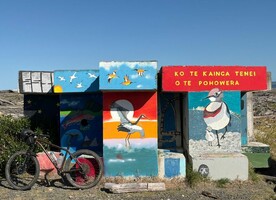News
Press Release: Environment Canterbury
Posted 21 02 2018
in News
Mackenzie Basin Agency
Environment Canterbury has released a report commissioned by the five agencies with statutory responsibility for land and water management in the iconic Mackenzie Basin.
The Mackenzie Basin – Opportunities for Agency Alignment review identifies the numerous opportunities and challenges facing agencies and the community in the future management of the Mackenzie.
Environment Canterbury Chief Executive Bill Bayfield said the regional council, the Department of Conservation, Land Information New Zealand and the Mackenzie and Waitaki District Councils were seeking ways to better work together for the benefit of the Basin, its unique environment and the people who live there.
“There has been substantial change in the Basin,” Mr Bayfield said. “Not everyone is happy with it. Changes in natural character, landscape, biodiversity and biosecurity, and water quality are all issues, as are the ability to develop businesses and the rules and consent framework.”
With these challenges in mind, the five agencies commissioned a project to identify opportunities for better alignment between them.
Working together to improve environmental outcomes
“The purpose is improved agency effectiveness and strategic focus, better environmental outcomes and improved capacity to meet the needs and interests of the Basin’s communities, stakeholders and rūnanga,” Mr Bayfield said.
“At meetings today and tomorrow we are sharing the contents of the report, seeking views on prioritising its recommendations and developing an understanding about which recommendations people and organisations would like to be involved in. We look forward to hearing the community’s views so we can improve the way agencies work together in the Mackenzie Basin.”
Land Information New Zealand Chief Executive Andrew Crisp said the review was an important document that identified areas of common ground for agencies and the community to work more closely.
“We recognise that pastoral agriculture and the iconic, wide open landscapes of the Mackenzie are an important part of our national identity and heritage, in the same way as our unique flora and fauna are important too.
“This is why LINZ has already been working more closely with DOC to better understand the ecological and landscape values when making decisions about Crown lands. The report provides an opportunity for us to take a broader, more coordinated approach to decision-making and management, working more collaboratively with the councils and community.”
Department of Conservation Director-General Lou Sanson said the Mackenzie Basin stood out nationally for its rare and globally significant dryland ecosystems, and that it was committed to working with LINZ and others to conserve its values.
Keeping the environment in balance
“The vision for the Basin has always included a balance of agriculture, tourism and conservation. In recent years we’ve seen significant advancements in tourism and agriculture while conservation protection has struggled to keep up. This report allows us to take a streamlined approach in our work to address this.”
Waitaki District Council Planning Manager Hamish Barrell said that within the Waitaki District, the communities of Omarama, Otematata and Ohau had always regarded their area’s conservation values as special.
“With the expansion of tourism and other development pressures including land conversion, Waitaki District Council has committed to re-thinking the balance between farming, tourism, new housing proposals and conservation through its District Plan Review,” he said.
“We share the protection of this special area with Mackenzie District and understand that long-term success on private land necessitates not only protection measures within the District Plan but also comprehensive pest control measures and incentives to facilitate the voluntary protection of indigenous biodiversity.
“We see this process as the continuation of co-operation with other stakeholders in the area including the Mackenzie Trust, Government agencies, Environment Canterbury, the local community and iwi that began with the Mackenzie Agreement in 2013.
Engaging communities
“While we await feedback on the report’s contents, we acknowledge its release is timely to help communities start engaging with the Waitaki District Plan. The District Plan review will not only affect Omarama, Otematata and Ohau communities, but also areas where Council must also give expression to the regional policies of the Otago Regional Council,” Mr Barrell said.
Mackenzie District Council Chief Executive Suzette van Aswegen said the report presented an exciting opportunity for the five agencies moving forward collectively. “It will enable more holistic and integrated management of the economic, cultural and natural resources dear to the Basin’s community, stakeholders and rūnanga,” she said.
“The Mackenzie District Council and other agencies understand the differing needs and interests of the Basin’s communities, rūnanga and the stakeholders from all corners of New Zealand due to its nationally significant values. We are committed to working together to achieve common goals and outcomes in consultation with the community, stakeholders and rūnanga,” Ms van Aswegen said.
19 Dec
Christmas break 2025

see you from 12 January
As we wrap up another big year, we’re taking a moment to pause, breathe, and enjoy a well-earned break. Meri …
18 Dec
President’s update

December 2025
Earlier this month I attended the Ngā Aho Māori Design Professionals Wānanga-ā-Tau at Te Aranga Marae in Flaxmere. Tuia Pito …
18 Dec
Awards 2026 update

An update as we warm up for the 2026 Awards kaupapa. Submissions will open in March and will run for …
Events calendar
Full 2025 calendar